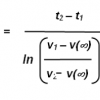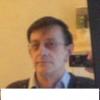Keep in mind they sorted out a particular cell type to make this observation. They are not making a singular distinction that these were the only cells benefiting. This is how they did it: Satellite cells can be isolated by Fluorescence Activated Cell Sorting based on their unique surface marker profile (CD45−Sca-1−CD11b−CXCR4+β1-integrin+), which effectively distinguishes them from non-myogenic cells and more differentiated myoblasts within the muscle. Also remember systemic GDF11 could reverse age-related cardiac hypertrophy and this was not stem cell based. These cells were fully mature cardiac tissue and yet they were brought back to a youthful state. There still remains some very deep questions as to the full range of all tissues affected? Does the protein enable the cell to fix the DNA problems or are the damaged cells just eliminated and heathy satellite cells promoted to replace them. These are early findings and more research needs to be done.
Also suggesting something beyond stem cell repair is happening, here is another excerpt. In addition, electron microscopy of uninjured muscle revealed striking improvements of myofibrillar and mitochondrial morphology in aged mice treated with rGDF11 (Fig. 3A). Treated muscles showed reduction of atypical and swollen mitochondria, reduced accumulation of vacuoles, and restoration of regular sarcomeric and interfibrillar mitochondrial patterning (Fig. 3A). Consistent with these ultrastructural improvements, levels of Peroxisome proliferator-activated receptor gamma coactivator 1α (PGC-1α), a master regulator of mitochondrial biogenesis, were increased in the muscle of aged rGDF11-treated mice (Fig. 3B), suggesting that GDF11 may affect mitochondrial dynamics of fission and fusion to generate new mitochondria. Consistent with this notion, in vitro treatment of differentiating cultures of aged satellite cells with rGDF11 yielded increased numbers of multi-nucleated myotubes exhibiting greater mitochondrial content and enhanced mitochondrial function (Fig. S13). Finally, we observed increased basal levels of autophagosome (macroautophagy) markers (assessed as the ratio of autophagic intermediates LC3-II over LC3-I), in the uninjured skeletal muscle of rGDF11-treated aged animals (Fig. 3C). Collectively, these data suggest enhanced autophagy/mitophagy and mitochondrial biogenesis as likely explanations for the cellular remodeling of muscle fibers in rGDF11-treated aged mice.
What does this mean, well enhanced mitochondrial function and mitochondrial biogenesis suggests a remodeling and repair of the affected tissues. This suggests something beyond stem cell repair is happening as old tissue is made more functional.
http://europepmc.org...cles/pmc4104429
Edited by Bryan_S, 09 February 2015 - 05:27 PM.





















































